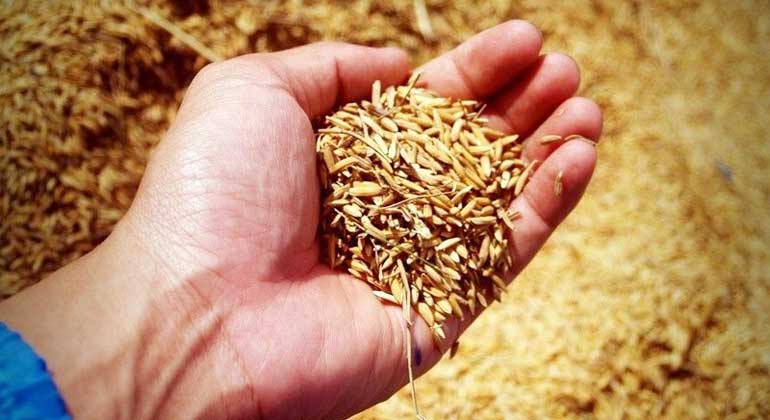
FARMERS’ ASSOCIATIONS contested an Agriculture department report that buying prices for palay, or unmilled rice, are at or near the P19 per kilogram government support price in the top producing regions, saying that actual prices received for the harvest are much lower.
Federation of Free Farmers (FFF) National Manager Raul Q. Montemayor said that farmers and traders across the country report that the prices for clean and dry palay range from P15 to P17 per kilogram, while freshly harvested palay is at P11 to P14.
The Department of Agriculture (DA) cited a Sept. 16-30 price survey conducted by the Philippine Rice Information System (PRiSM) showing a palay price average of P18 in Central Luzon and P19 in Cagayan Valley.
The report said newly-harvested palay in the two regions fetched an average of P14 per kilo.
The National Food Authority (NFA) pays P19 per kilo for palay with 14% moisture content, setting a price benchmark for the sector. The NFA’s mandate is to maintain a national buffer stock of rice, and does not have the funds or the storage capacity to purchase the entire harvest, leaving many farmers to try their luck with private traders, who try to undercut the NFA price.
According to the DA, the PRiSM survey was conducted across 16 regions and involved 219 respondents, including farmers, traders, and millers.
“We base our analysis and decisions using more reliable data. We go down to the communities to monitor and ensure that our interventions are in place and benefit our farmers,” Agriculture Secretary William D. Dar said.
The survey also included palay price-monitoring data from DA regional field offices and local government units.
PRiSM gathers location-specific data on the status of rice crops such as rice area estimates, planting dates, yield estimates, and crop health assessments.
The DA also cited the Philippine Statistics Authority’s estimate of average palay farmgate prices for the second week of September, which was P17.12.
Mr. Dar said claims by farmers’ groups that low palay prices are due to Republic Act No. 11203 or the Rice Tariffication Law are “exaggerated.”
Mr. Dar said FFF claims of weak prices have been “debunked” by the survey data.
“Our PRiSM data debunks the disinformation waged by interest groups against the Rice Tariffication Law, blaming it for the decline in prices of palay,” Mr. Dar said.
“It can be seen that the data used by the government is not far from each other and the reality is that the prices of palay are not as low as interest groups claim on social media,” he added.
PRiSM is a joint venture by the Philippine Rice Research Institute, International Rice Research Institute, and Swiss technology firm Sarmap.
“Even assuming that Secretary Dar’s P19-figure is true, the reality is that farmers actually receive a much lower price because they lack the drying, cleaning, storage, trucking and other facilities to meet the quality standards for such a price,” FFF’s Mr. Montemayor said.
“PRISM was designed primarily to monitor crop conditions, including damage from calamities, using satellite imagery. It was not intended to be a price monitoring tool,” he added.
Separately, Samahang Industriya ng Agrikultura (SINAG) in a statement also disputed the DA’s price claims, citing its own feedback from rice farmers showing that “real” prices for palay are much lower.
“We reiterate our call for the government to procure all harvest. It is unfortunate that the DA has resorted to disputing the data on the ground rather than finding ways to address the depressed farmgate price of palay,” SINAG said. — Revin Mikhael D. Ochave
